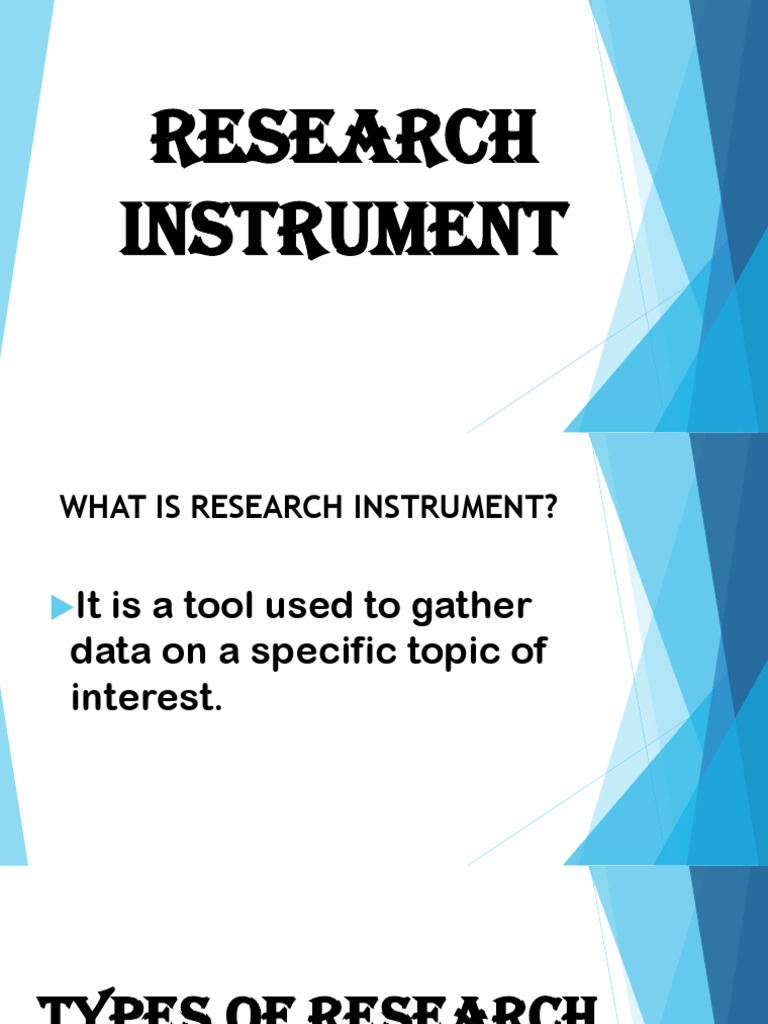In the realm of academic research, selecting an appropriate research instrument constitutes one of the most pivotal decisions a researcher can make. The outcome of a study often hinges not only on the integrity of the data but also on the suitability of the tools employed in its collection. This article elucidates the multifaceted considerations inherent in choosing the best research instrument, facilitating a process that transcends mere selection to become an discerning exercise in methodological precision.
Understanding the Nature of Your Research
Before diving into the selection of research instruments, an intrinsic understanding of the research question is paramount. What are the objectives of the study? Are you hypothesizing a direct correlation, or are you seeking to explore a more complex, multifactorial relationship? The nature of the inquiry—whether qualitative, quantitative, or mixed-methods—will drastically influence the choice of instruments. A clear articulation of the research hypothesis can underscore the desired outcomes, thereby narrowing down the plethora of available tools.
Defining Your Target Population
Your choice of instrument is intricately linked to the characteristics of your target population. Are you surveying a heterogeneous group, or are you dealing with a more homogeneous cohort? Consideration must be given to factors such as age, education level, culture, and socioeconomic status, which can all affect how subjects respond to different types of instruments. The instrument must be accessible and comprehensible to your population to elicit genuine, reliable data. A mismatch between the research tool and the population can lead to skewed results and diminish the credibility of the research findings.
Evaluating Instrument Validity
Validity is a paramount characteristic of any research instrument, referring to the extent to which it measures what it purports to measure. There are several dimensions of validity to consider:
- Content Validity: Does the instrument comprehensively cover the concept under investigation?
- Construct Validity: Is there empirical evidence linking the instrument with theoretical constructs?
- Criterion Validity: How does performance on the instrument correlate with other established measures?
Thorough examination of these validity forms ensures that the data garnered from the instrument will advance the research objectives by enhancing interpretive accuracy and reducing methodological errors.
Assessing Reliability
Reliability refers to the consistency with which an instrument yields results. A reliable instrument will produce similar outcomes upon repeated applications under unchanged conditions. Assessing internal consistency using metrics such as Cronbach’s alpha is a crucial step in this process. Moreover, test-retest reliability—where the same instrument is administered in two instances to the same cohort—can provide insights into stability over time. An instrument failing to exhibit robustness in reliability may threaten the validity of the study’s conclusions, rendering the resulting data suspect.
Considering Practicality and Feasibility
In the pursuit of academic rigor, one must also remain cognizant of the practicalities surrounding the deployment of research instruments. This includes considerations such as time constraints, budgetary limitations, and available expertise. Will the instrument require extensive training for administration, or can it be readily employed by the research team? Does it demand costly resources that could exhaust your funding? Being pragmatic ensures that the research instrument not only has theoretical merit but also aligns with the logistical realities of the study.
Exploring Diverse Instrument Types
The landscape of research instruments is populated with a variety of tools, each possessing unique advantages and limitations. Surveys, interviews, and observational techniques represent just a few modalities available to researchers. Surveys can efficiently gather data from larger populations but may lack the depth found in qualitative interviews. Conversely, interviews can yield rich, nuanced data, yet they are often labor-intensive. Additionally, observational methods can capture real-time data but can be influenced by observational biases. A meticulous appraisal of these types will guide researchers in selecting an instrument that harmoniously aligns with their methodological aspirations.
Piloting the Instrument
Prior to the full-scale deployment of any research instrument, conducting a pilot study is invaluable. This preliminary testing phase allows for the identification of unforeseen complications or weaknesses within the instrument, offering an opportunity to make necessary adjustments. A pilot study not only enhances the reliability and validity of the chosen tool but also fosters confidence in the research process. By scrutinizing the instrument in a real-world context, researchers can preemptively mitigate potential issues.
Soliciting Peer Feedback
Engagement with peers can provide critical insights into the selection process. Discussion and critical evaluation among colleagues can illuminate blind spots, allowing for a richer analysis of the chosen instruments. Peer feedback can facilitate a constructive dialogue surrounding methodological choices, promoting a culture of collaborative excellence in research. The benefit of an oppositional yet supportive review cannot be overstated; it sharpens instruments and enhances overall research quality.
Conclusion
The meticulous selection of the appropriate research instrument constitutes a complex yet essential endeavor in the academic landscape. Through a comprehensive understanding of research objectives, population characteristics, instrument validity and reliability, practical constraints, and peer collaboration, researchers can navigate towards tools that elevate the integrity and relevance of their findings. Embracing this multifaceted approach encourages a significant paradigm shift, inviting curiosity and meticulousness into the research process. Such diligence not only enriches individual studies but advances the collective understanding within the wider academic community.










